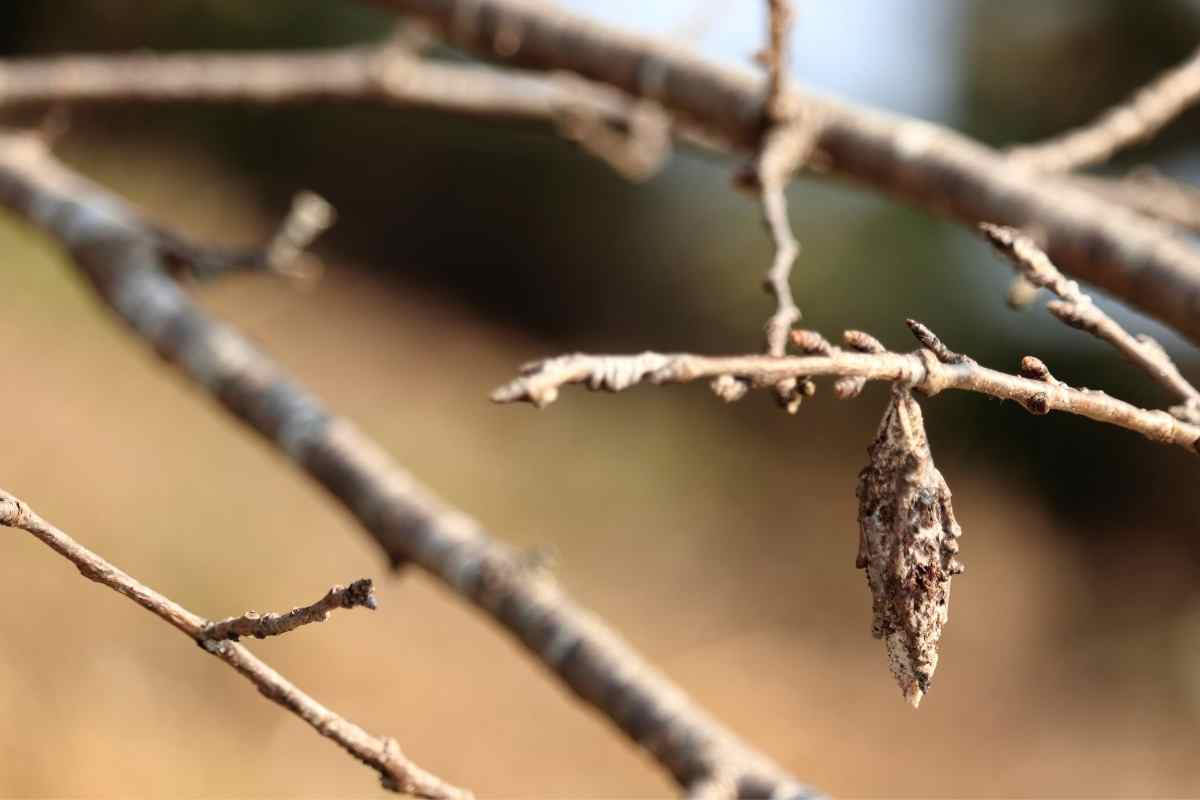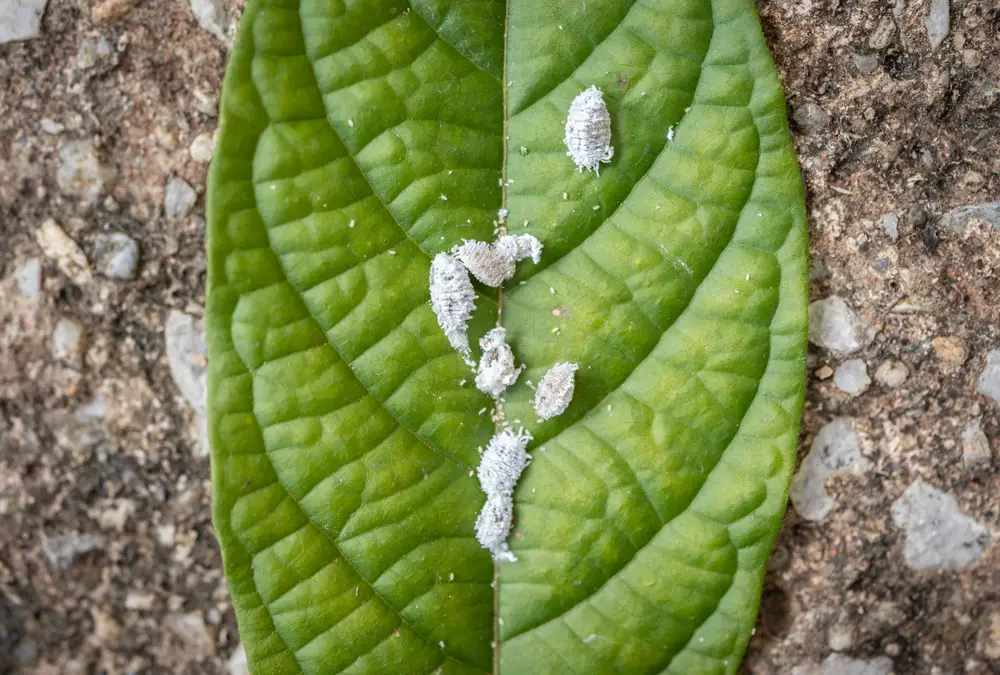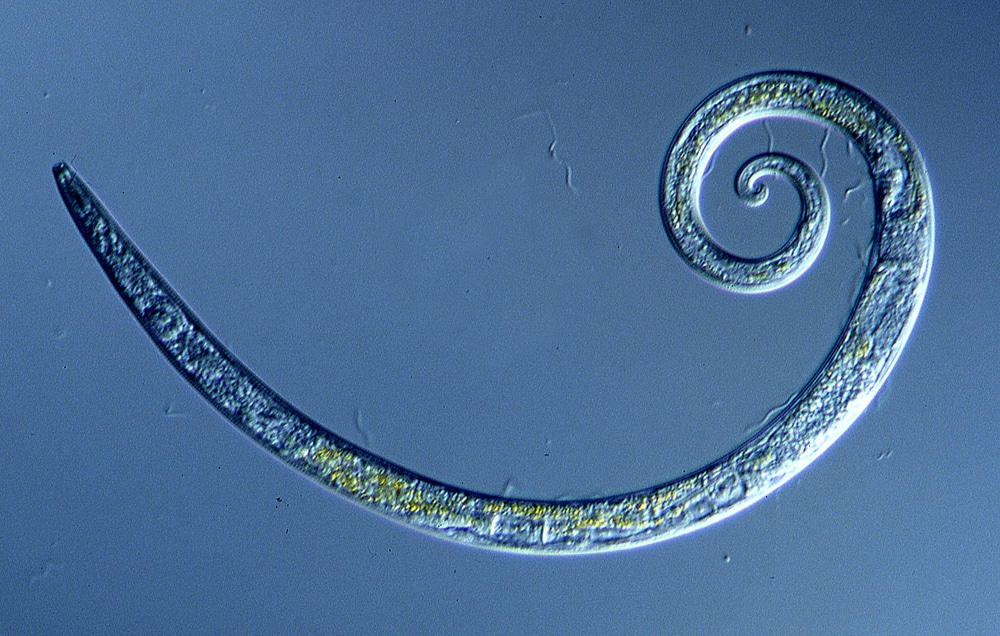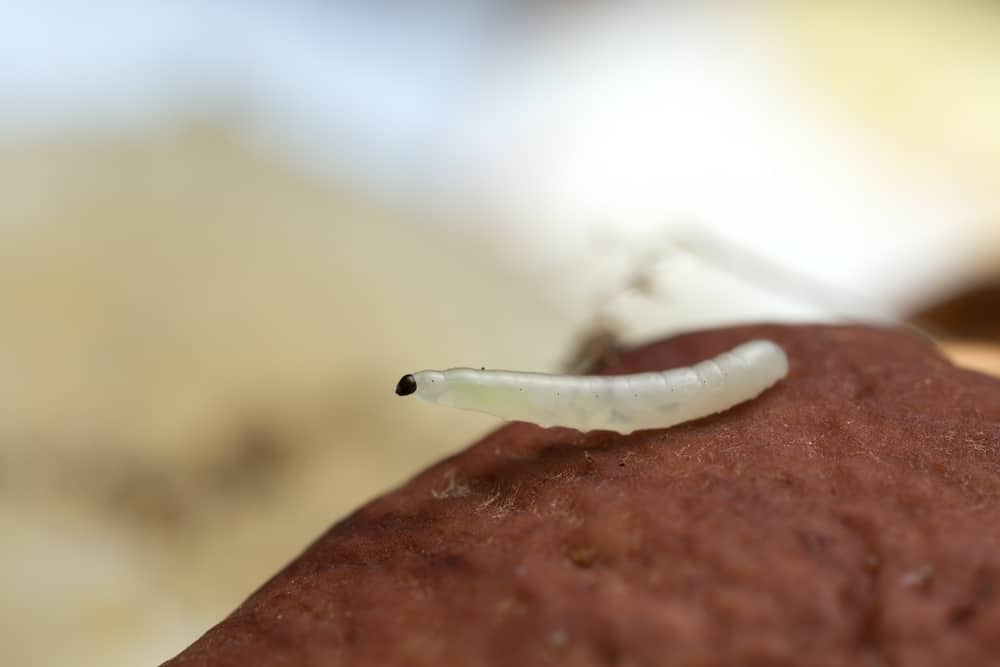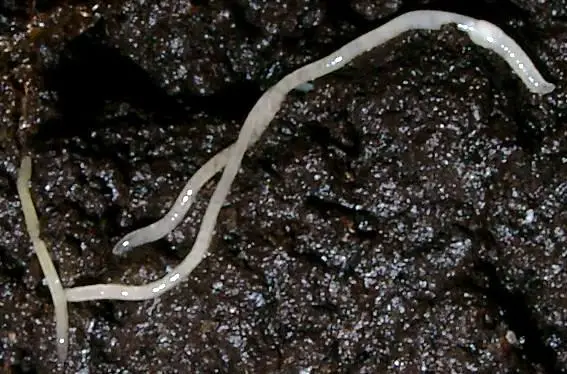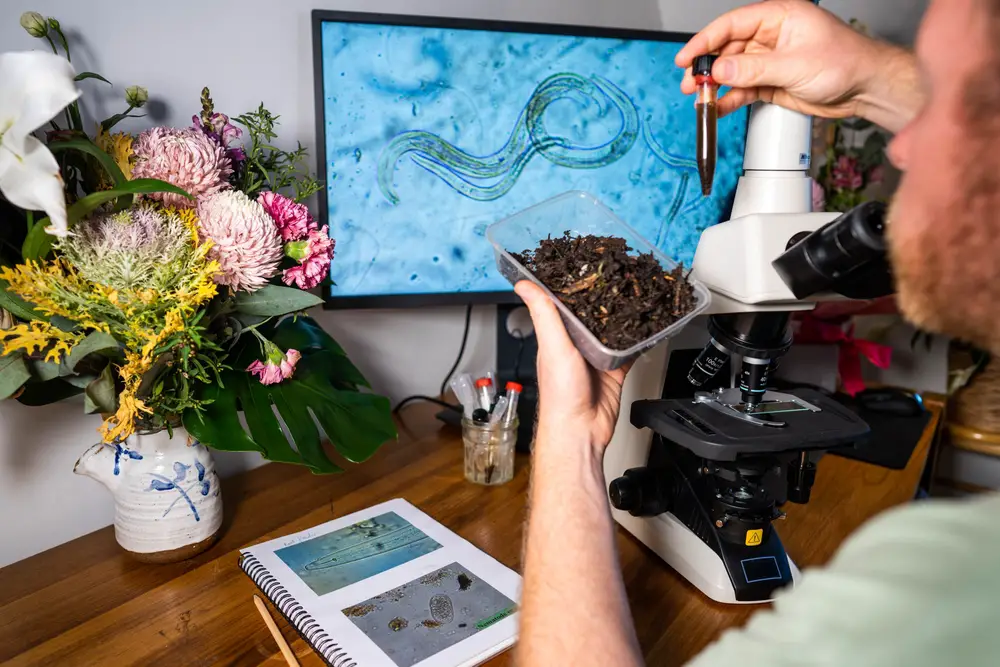If you are tackling a bagworm infestation, the good news is that you have nature on your side!
There are several predator species that will eat bagworms for you, including the ichneumon wasp, woodpeckers and sapsuckers.
Knowing the natural predators of this caterpillar means you can take a targeted approach to your control strategies and avoid killing the insects that are helping you with the indiscriminate use of pesticides.
Bagworms are harmless to humans but can cause a lot of damage through defoliation so it is worth understanding how to keep their numbers under control. In this article, we will run through the essentials of recognising and dealing with these curious pests, including all the insects and birds that eat bagworms.
What Are Bagworms?
Bagworms are the distinctive larvae of the bagworm moth, a member of the Lepidoptera family with about 1300 sub-species that are all characterised by the formation of strange bags or casings in which the caterpillars live.
The Bag of the Bagworm
New bagworms hatch from eggs that are left in the bag of the female bagworm that laid them.
Once hatched they are dispersed by ballooning, with each young caterpillar spinning a silk strand that they use to parachute to new host plants by the wind.
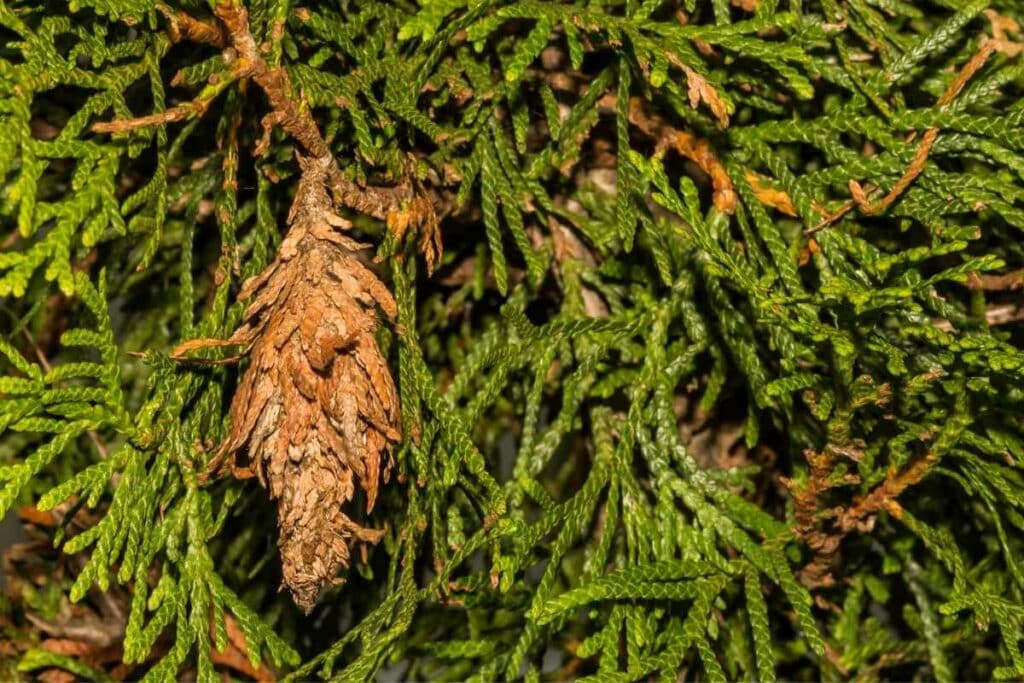
The ballooning process is repeated several times until they find a suitable host plant.
The larvae of the bagworm moth form these bags by combining plant material with the silk it spins to form something similar to a large sock or sleeping bag.
Items integrated into the bag design include pine needles, twigs and leaves. The caterpillar makes its bag so that it camouflages while feeding on the host plant.
Did You Know? Only its head and thorax are visible outside of its bag. The caterpillar drags the bag around while it feeds, making a hasty retreat inside if a predator turns up.
The Bagworms Bag Is Also the Location of Metamorphosis
When mature and ready to become a moth, bagworm larvae will fix the bag to a discrete branch, enter the bag and pupate.
Female adult bagworms are wingless and continue to live in the bag and lay eggs within it that will overwinter and hatch in the spring.
Males will emerge from their bag as a moth that is more conventional in appearance.
Life is short for the mature moths, with females lasting only a couple of weeks, and males just a few days.
When Their Numbers Are High, Bagworms Can Do a Lot of Harm to Surrounding Vegetation
Because bagworms feed off their host plants and trees, large populations of these caterpillars and adult females can do a lot of damage.
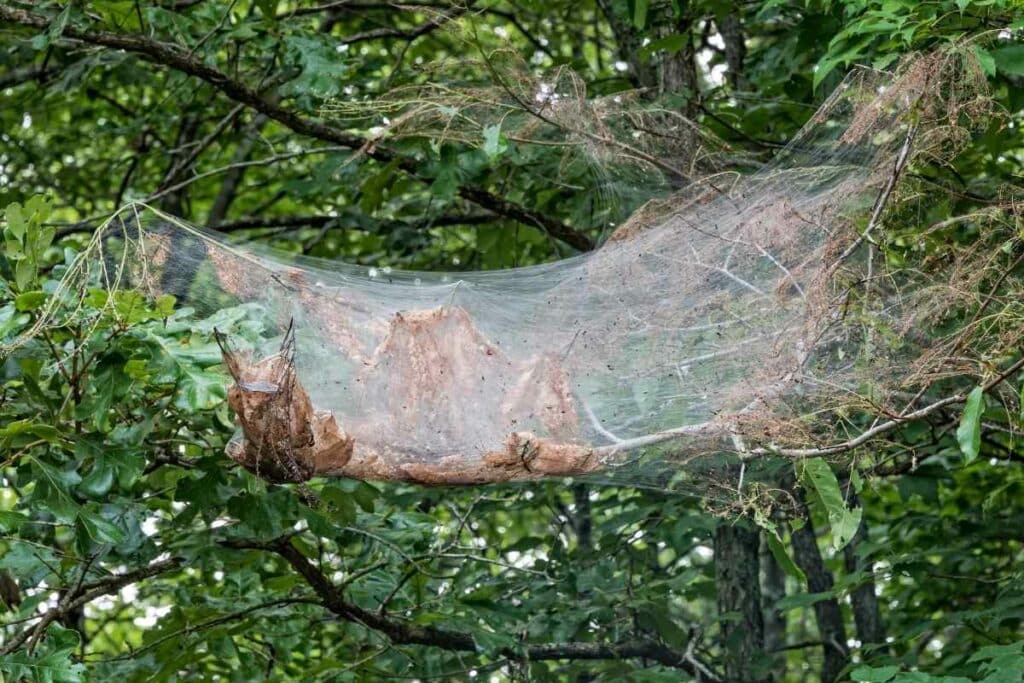
They can completely defoliate plants and trees as the population of bagworm spread from one infested plant to another.
What Do Bagworms Eat?
Bagworms can eat the leaves of any tree.
Deciduous trees can recover from their defoliation, but evergreen trees cannot and often die if infested with bagworms.
They prefer the following species of deciduous and evergreen trees:
- Pine
- Fir
- Spruce
- Sycamore
- Sweetgum
- Honey locust
- Black locust
- Maple
- Juniper
- Linden
- Boxelder
- Cypress
- Arborvitae
The Activities of the Bagworm Are a Big Problem to Us Landowners
Thyridopteryx ephemeraeformis is a bagworm species that is native to North America.
In the more northern states, frost usually kills the overwintering eggs, but further south the eggs and larvae can survive and populations of this pest can become entrenched.
Bagworms are often introduced into new areas on nursery stock or saplings that are planted as part of landscaping projects.
They can multiply quickly to damage the new stock of trees and if winters are mild, continue to multiply and damage trees.
Little-known Fact: Each female bagworm can produce up to 1000 eggs, meaning that population growth can be explosive.
Strategies for Tackling Bagworm Infestation
Bagworms can be brought under control with a sustained, diligent eradication campaign.
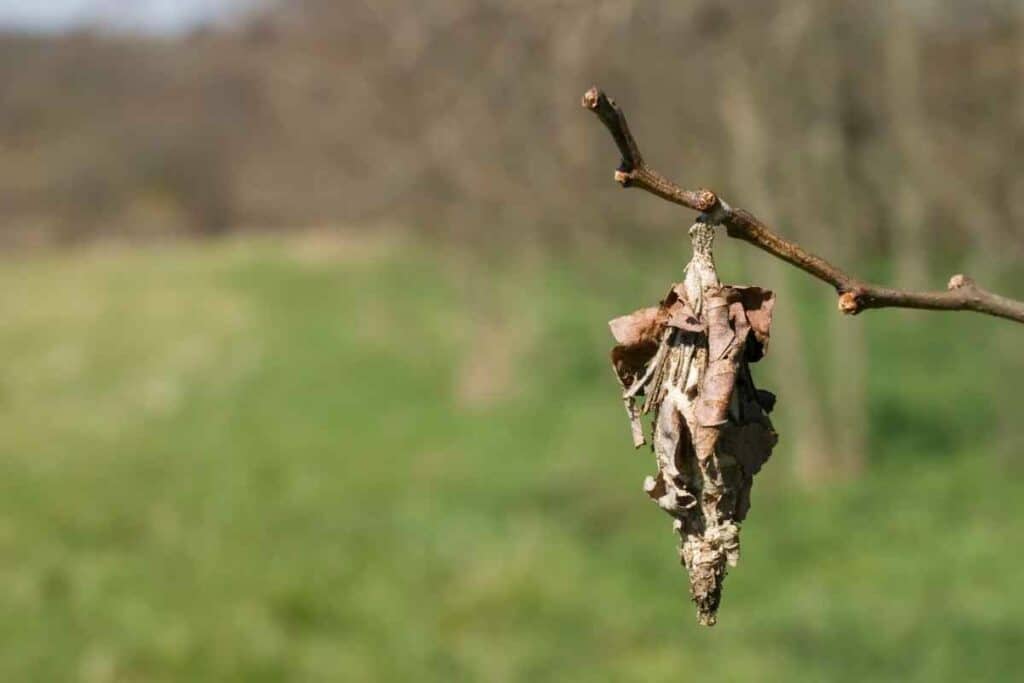
The key to success is being able to recognise the “bags” or the bagworms and tackle them before their numbers start to rise.
Here are the main organic management strategies for bagworm caterpillars and moths:
- Handpicking: if you can identify overwintering egg-filled bags, you can decimate the bagworm population by cutting off their bags and steeping them in a bucket of soapy water. The caterpillars and female moths can be managed by hand if numbers are low.
- Bt treatment: Bacillus thuringiensis (Bt) spray can be used to kill the emerging, small bagworm caterpillars. This endotoxin when ingested by the caterpillars is an effective insecticide because it will rupture the gut of the caterpillar.
- Spinosad: this is another insecticide (a neurotoxin) that has been demonstrated to be effective in tackling infestations of bagworms. It is most effective when used on young caterpillars.
Encouraging Natural Predators Is an Effective Long-term Approach for Dealing with the Bagworm
The natural predators of the bagworm caterpillar are one of the best ways of keeping populations of this pest under control.
Animals and insects that will eat bagworms include:
- Ichneumon wasps
- Vespid wasps
- Hornets
- Chickadees
- Nuthatches
- Sparrows
- Woodpeckers
- Sapsuckers
- Titmice
You can encourage parasitic wasps including the ichneumon wasp into an area where bagworms are prevalent by planting Aster flowers near a susceptible tree.
The pleasant flowers will attract wasps that will parasitise the bagworm by laying their eggs in them.
Rounding Up
Despite their unusual armour, bagworms are not invincible, by targeting them young with their natural predators you can keep this all-American pest well under control.
